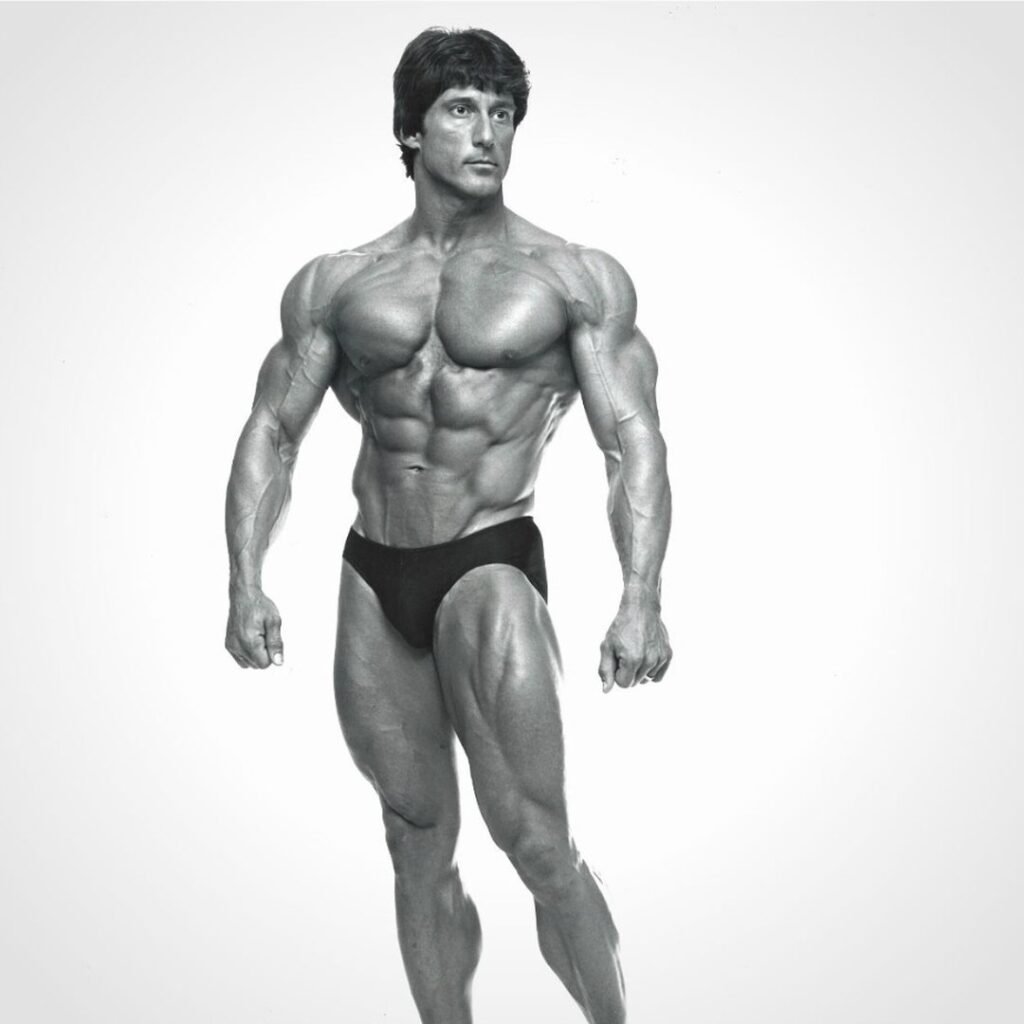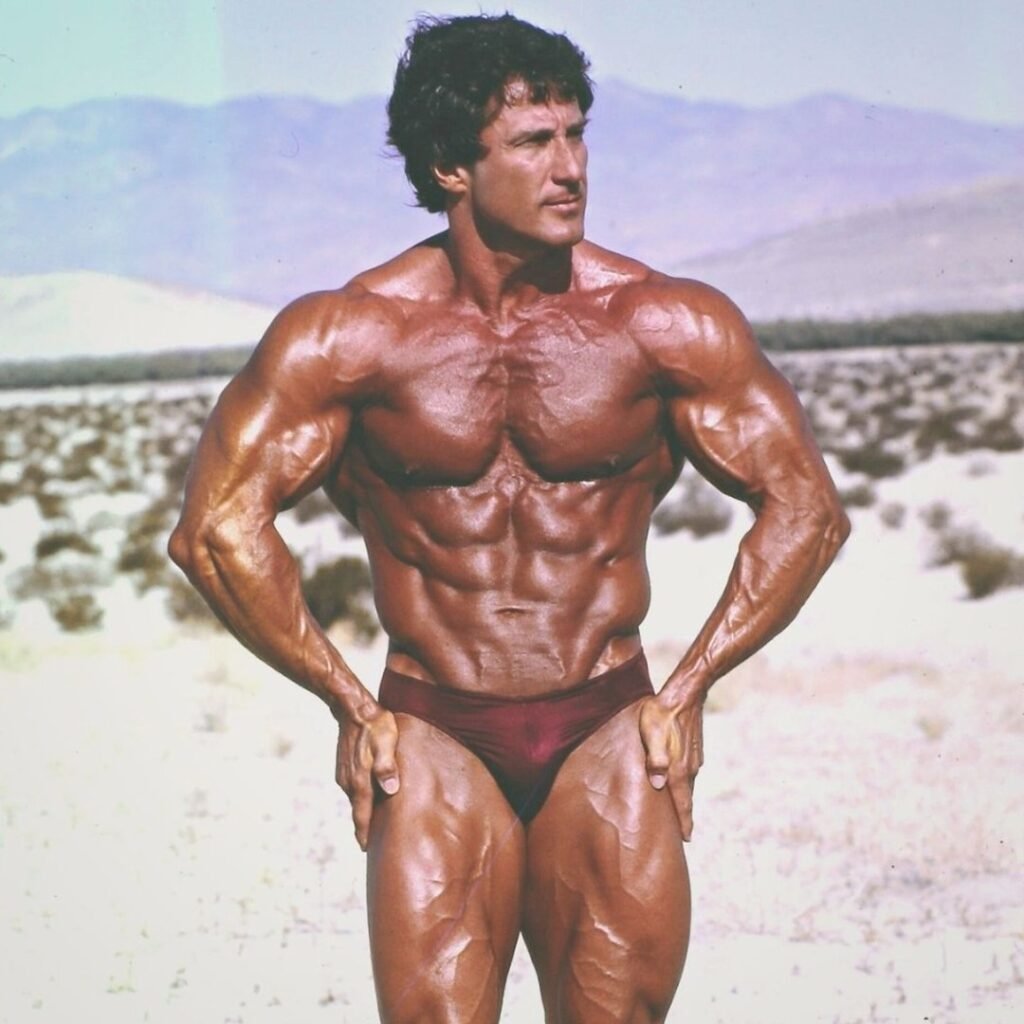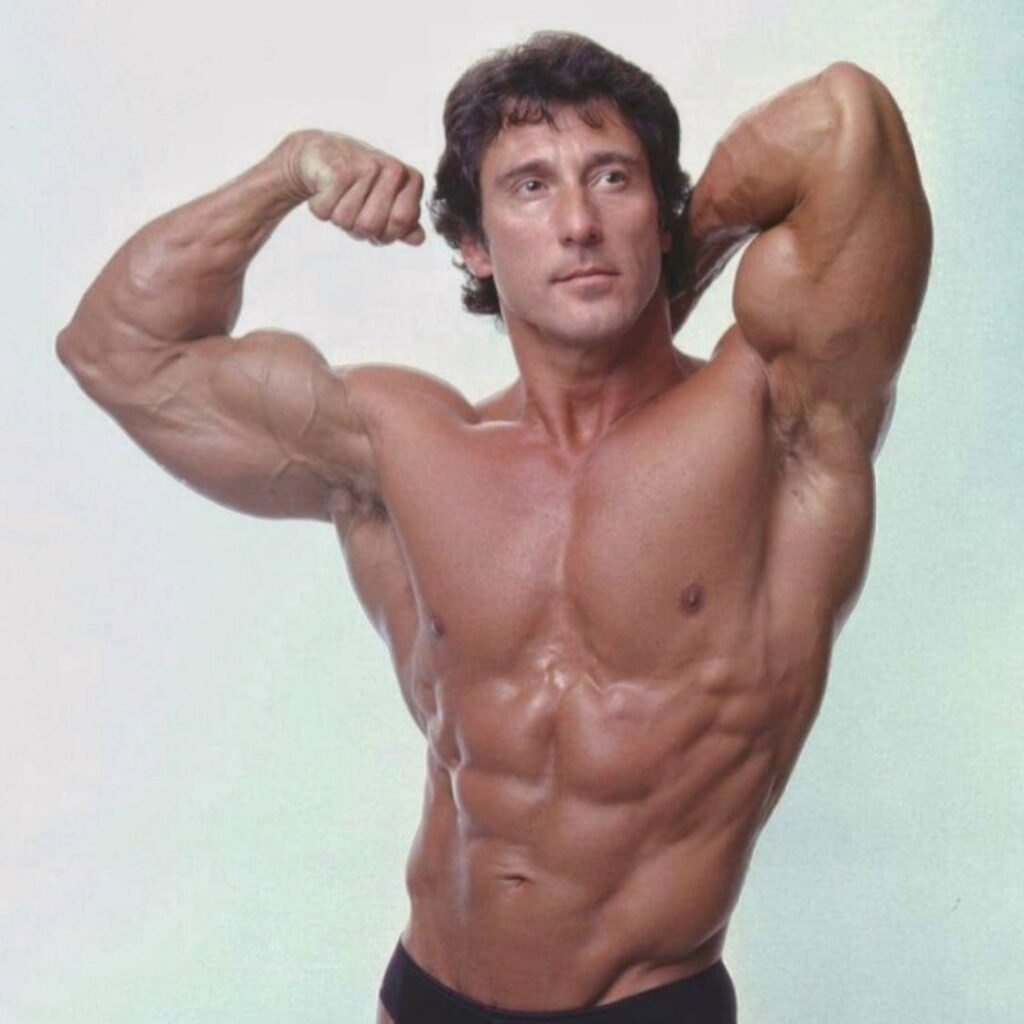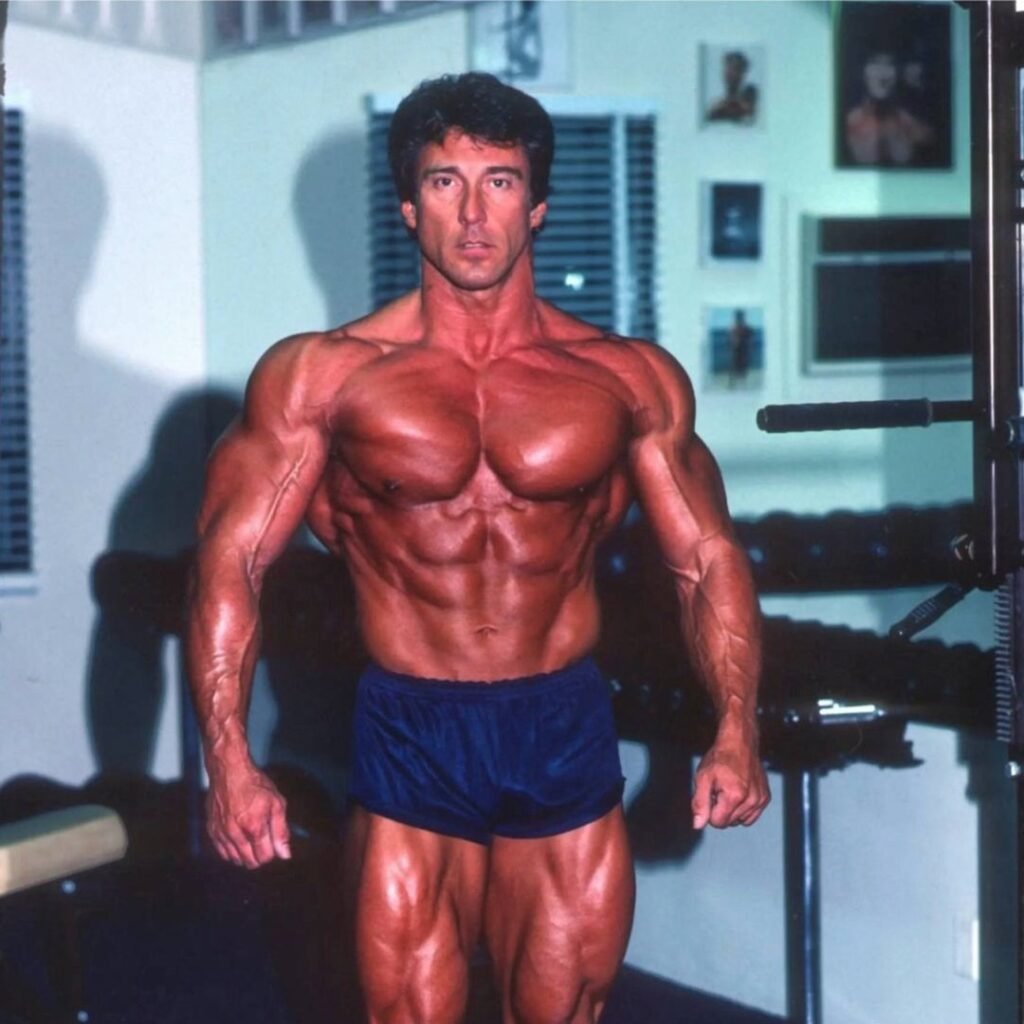In the world of bodybuilding, few names resonate as powerfully as Frank Zane. A three-time Mr. Olympia champion, Frank Zane is celebrated for his aesthetic physique, unparalleled symmetry, and methodical approach to training.
Even at 82 years old, Frank Zane continues to be a beacon of knowledge and inspiration for athletes seeking to refine their craft.
His latest advice, shared on Instagram on August 6, 2024, is a masterclass in overcoming one of bodybuilding’s most persistent challenges: how to make progress on body parts that lag in development.
For any bodybuilder, achieving a well-balanced physique is the ultimate goal. However, it’s not uncommon for certain muscle groups to develop more slowly than others, creating imbalances that can be frustrating and challenging to overcome.
Frank Zane, who was renowned for his ability to sculpt a physique with little to no weaknesses, offers three straightforward yet effective tips for addressing these stubborn areas.

His insights, rooted in decades of experience, provide a roadmap for athletes looking to bring their weaker body parts up to par.
Related: Frank Zane: Mastering Low-Carb Diets, High Protein, and Bodybuilding Excellence
1. Prioritize Weak Points in Your Workouts
Frank Zane’s first piece of advice is deceptively simple: start your workouts by targeting your weak points.
This approach capitalizes on the fact that energy levels are highest at the beginning of a workout, allowing you to focus your strength and attention on the areas that need the most improvement.
“You will probably find that certain parts of your body improve faster than other parts,” Zane explains. “The way to get around this is by working your weak points first in your workout when your energy, strength, and attention are greatest.”
By prioritizing weaker muscle groups, you ensure that they receive the most intense and focused effort during your training session.
This strategy not only helps stimulate growth in these lagging areas but also prevents them from being neglected or overshadowed by stronger, more developed muscles.
For example, if your shoulders are lagging behind your chest and arms, Frank Zane suggests beginning your workout with exercises that specifically target the shoulders before moving on to other muscle groups.

This method is particularly effective because it aligns with the principle of progressive overload, a key factor in muscle growth.
By challenging your weaker body parts when your energy is at its peak, you’re more likely to lift heavier weights and perform more repetitions, both of which are essential for building muscle mass and improving overall symmetry.
2. Increase Volume and Intensity with Heavier Weights
The second tip from Zane is to increase both the volume and intensity of your workouts for the muscle groups that are lagging in development.
This means performing additional sets and using heavier weights than you might typically use for these areas.
“Doing more sets with heavier weights for areas lagging in development” is crucial, Zane advises.
AdvertisementContinue Reading Below
Increasing the training volume for lagging muscle groups can help stimulate hypertrophy by creating more mechanical tension—a key driver of muscle growth.
By adding more sets, you’re essentially giving these muscles more opportunities to be challenged and grow.
However, Frank Zane is quick to point out that intensity is equally important.
It’s not just about the number of sets you do, but also the amount of weight you’re lifting and how close you’re pushing yourself to failure.
Heavier weights, when used correctly, can force your muscles to adapt and grow stronger.
However, it’s important to approach this method with caution, especially if you’re new to lifting heavy.
Proper form and technique should always be prioritized to prevent injury and ensure that the targeted muscles are being effectively engaged.
3. Train Unresponsive Body Parts on Consecutive Days
Frank Zane’s final tip is perhaps the most unconventional but highly effective for those struggling with particularly stubborn muscle groups.
He recommends training lagging body parts on two consecutive days, followed by a rest day, and then repeating the process.
“Working the unresponsive body parts two days in succession, resting this area on the third day, and then training it again two more days in succession,” is a method Zane believes can yield significant improvements.
This approach, often referred to as a “split routine,” is designed to overload the muscles and force them to adapt quickly. By hitting the same muscle group on consecutive days, you create a cumulative effect of muscle fatigue, which can lead to increased muscle fiber recruitment and, ultimately, growth.

However, Frank Zane also cautions that this method should not be used for more than a month at a time, as it can lead to overtraining if not carefully managed.
“After a month, you should be able to make the progress you desire,” Zane says. “I often use this method when training for an exhibition or competition and some body part isn’t responding as I’d like it to.”
To maximize the effectiveness of this approach, Frank Zane suggests varying the exercises used on each training day. For example, if you’re focusing on your shoulders, you might do behind-the-neck presses, upright rows, and bent-over lateral raises on the first day.
Then, on the second day, switch to dumbbell presses, side dumbbell raises, and rear incline raises.
This variation helps to ensure that all parts of the muscle are being targeted and reduces the risk of overuse injuries.
Related: Frank Zane: The Chemist and His Thoughts on Bodybuilding Today
The Zane Method: A Legacy of Precision and Adaptability
Frank Zane’s advice is a testament to the precision and adaptability that defined his career.
His approach to training was never about brute strength alone, but rather about understanding the body’s unique responses to different stimuli and making calculated adjustments to achieve the desired results.
In a sport where size often dominates the conversation, Zane’s focus on aesthetics, balance, and proportion set him apart and allowed him to excel at the highest levels of competition.

His tips for improving lagging body parts are a reflection of this philosophy, emphasizing the importance of strategic thinking and consistency in training.
Today, Frank Zane’s legacy continues to inspire a new generation of bodybuilders who aspire to build not just mass, but a physique that is both powerful and aesthetically pleasing.
His tips for addressing lagging body parts are just one of the many ways he continues to give back to the bodybuilding community, sharing the wisdom that helped him achieve greatness.
Related: Frank Zane’s Diet Plan and Workout Routine
Incorporating Zane’s Tips into Your Training Routine
If you’re struggling to bring up a lagging body part, Frank Zane’s three tips provide a practical and effective roadmap for making progress.
By prioritizing weak points in your workouts, increasing volume and intensity with heavier weights, and training unresponsive muscle groups on consecutive days, you can start to see improvements in areas that have been slow to develop.
As with any training method, it’s important to listen to your body and make adjustments as needed.
Overtraining can be counterproductive, so it’s crucial to find the right balance between pushing your limits and allowing adequate recovery time.
With Frank Zane’s tips in mind, you can approach your training with renewed focus and determination, confident that you’re on the path to a more balanced and well-rounded physique.
Frank Zane’s advice is a reminder that bodybuilding is as much about strategy and discipline as it is about lifting heavy weights.
By applying these principles to your training, you can start to overcome the challenges of lagging body parts and build a physique that you can be proud of.